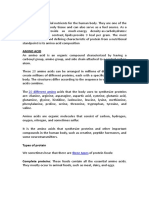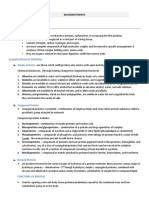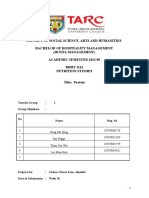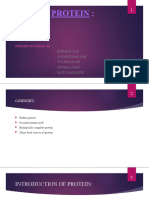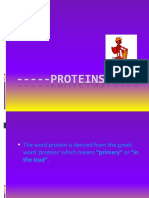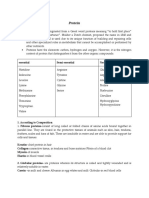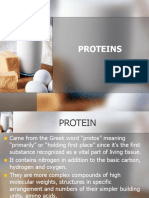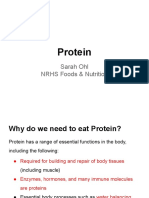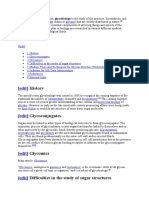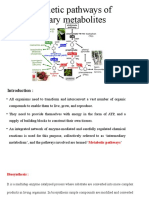0% found this document useful (0 votes)
22 views13 pagesProtein
Proteins are essential organic compounds made up of amino acids, with 20 types needed by the human body, 8 of which are essential and must be obtained through diet. They play crucial roles in body building, maintenance, immune function, and can provide energy when necessary. Protein sources are classified into animal and vegetable, with animal proteins being biologically complete, while proper combinations of plant proteins can achieve similar nutritional value.
Uploaded by
champion5500.16Copyright
© © All Rights Reserved
We take content rights seriously. If you suspect this is your content, claim it here.
Available Formats
Download as PDF, TXT or read online on Scribd
0% found this document useful (0 votes)
22 views13 pagesProtein
Proteins are essential organic compounds made up of amino acids, with 20 types needed by the human body, 8 of which are essential and must be obtained through diet. They play crucial roles in body building, maintenance, immune function, and can provide energy when necessary. Protein sources are classified into animal and vegetable, with animal proteins being biologically complete, while proper combinations of plant proteins can achieve similar nutritional value.
Uploaded by
champion5500.16Copyright
© © All Rights Reserved
We take content rights seriously. If you suspect this is your content, claim it here.
Available Formats
Download as PDF, TXT or read online on Scribd
/ 13





